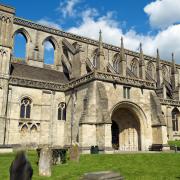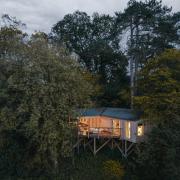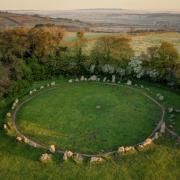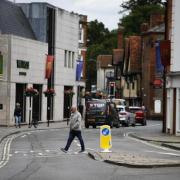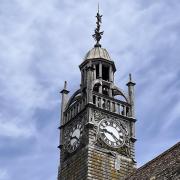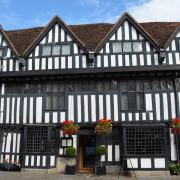The Gloucestershire Warwickshire Railway is a Heritage railway operated by volunteers. It was first built in 1906 and closed in 1976. The track was lifted in 1979-80 and then re-laid the following year. They now operate about 14 miles of track between Broadway and Cheltenham Racecourse. Eventually they hope to join it to the mainline at Honeybourne.

Cheltenham Racecourse: This station opened in 1912, seeing both equine and passenger traffic for the first Cheltenham Gold Cup that year.
Toddington: Local fruit, tinned fruit, milk and coffee were delivered, packed and transported from Toddington station. The goods yard was the largest and probably busiest on the line.
Local growers stopped using the railway and transported by road after the rail strike in 1954.
The television series Father Brown was regularly filmed at Toddington Station. Engines here include Dinmore Manor No.7820, Foremarke Hall No 7903, Penninsular & Oriental S.N.Co No.35006, and No 2807. There are 12 operational Diesel locomotives and DMU's and 8 non-operational, along with over 40 coaches. In 2016, I did the signwriting and lining on the Merchant Navy class pacific no. 35006.

Adlestrop: Inspired by the iconic poem by Edward Thomas. The station no longer exists but the sign and seat are still there. Another nearby track place is the Vale of Berkeley Railway. They are aiming to reopen the Sharpness branch line, as a heritage railway tourist attraction.
Stanway viaduct: The viaduct is 200 metres long and 13 metres high with 15 arches. It was built in 1904, using Staffordshire blue bricks. During the building works of the viaduct in 1903, a crane driver called Smith, and several others were working on top of arch 10 when it collapsed. While they were being rescued the next arch fell, then the next. Smith survived the first, but tragically the arch he went under for safety, also fell and he died later in Winchcombe Hospital. At the end of building, five workers died and more than 50 were injured.
The viaduct is under restoration which is costing 1.8 million pounds. If you would like to donate then visit www.gwrt.org.uk
www.gwsr.com









